|
A selection of room settings decorated with Morris
& Co wallpapers and fabrics available from our fabric
and wallpapers department.
Page 1 | Page 2
| Page 3
|
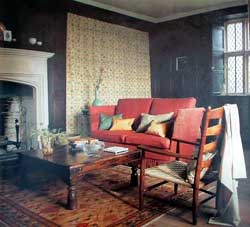 |
The first paper issued by Morris, Marshall,
Faulkner & Co. in 1864, Daisy has become one of Morris'
best loved wallpaper patterns. The design was inspired
by an illustration in a late Medieval illuminated manuscript
which Morris studied in the British Library. |
 |
This design was first produced by Morris
as an indigo discharge print in 1882. The subtle blurring
and speckling which softens the block outlines was a characteristic
of some of the original Morris fabrics which were hand
printed by his own craftsman at Merton Abbey. |
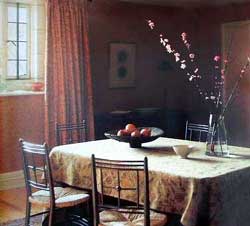 |
Savernake, inspired by a ketch made by Morris
for a tile design, reflects Morris' spontaneous drawing
style. It takes its name from the Wiltshire forest where,
as an idealistic schoolboy, Morris would wander. |
 |
This vigorous growth of honeysuckle, perfectly
placed across the paper, was drawn in 1883 by Morris'
younger daughter, May. |
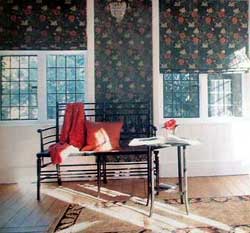 |
A talented young assistant in the Oxford
Street showroom, John Henry Dearle was discovered and
trained as designer by Morris himself. Dearle was to become
the firm's chief textile designer. Compton, one of Dearle's
patterns, was designed for Compton Hall, Wolverhampton,
in 1895 |
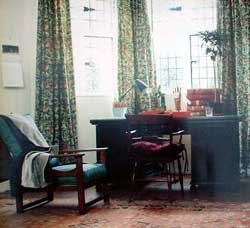 |
A late Morris & Co. print, Arbetus was designed
by Kathleen Kersy, a member of the Morris & co. design
studio, on the eve of the First World War. |
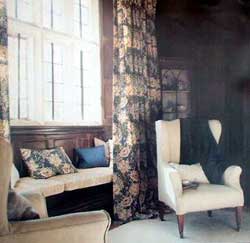 |
A rich, exuberant pattern of flowers and
foliage enlivened by a delicate back print of tiny leaves.
Chrysanthemum was designed by Morris in 1877 |
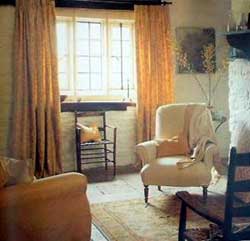 |
Jasmine, a graceful and delicate pattern,
is composed of two layers of intertwined foliage which
gives the design its complexity. This print, designed
in 1872, was used to decorate Morris' own study at Kelmscott
House. |
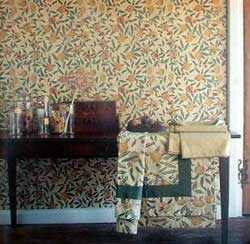 |
One of Morris' earliest wallpaper designs,
Fruit first appeared in 1866. This diagonal trail of leaves
and fruit is built up in layers of blocked colour overlaid
with lines and dots. The style reflects its craft origins
as a wallpaper printed by hand from a series of 12 wooden
blocks. |
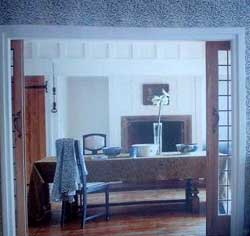 |
Morris took nature as his prime inspiration,
and according to his daughter May, the idea for this foliage
pattern of 1887 came from the willow trees growing near
his house on the banks of the river Thames. |
| Back to main interiors
page |